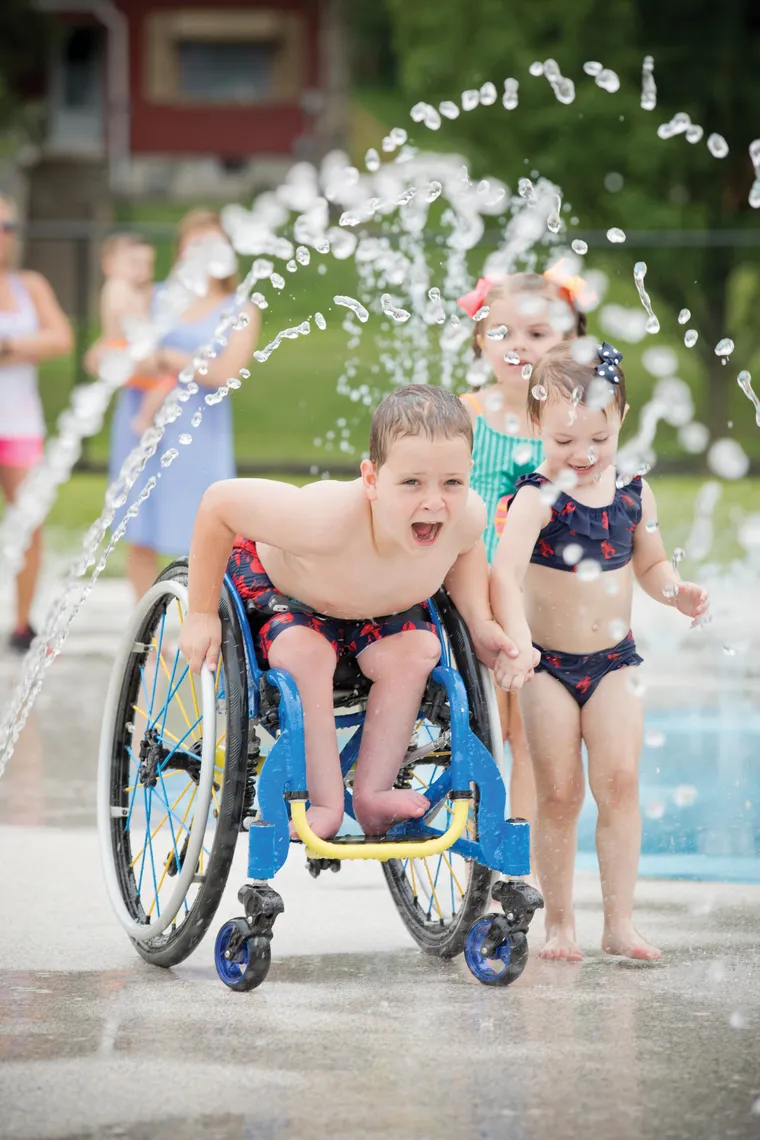How splash pads can provide inclusive fun for all
When the summer sun blazes, many families flock to splash pads to beat the heat. These play spaces can be a refreshing escape for children and caregivers of all ages—and they can be particularly effective in ensuring that kids of all abilities are included in the fun.
Water-based activities like those found at splash pads can help children self-regulate and calm their nervous system. And because splash pads typically have an open design and a flat surface, they often accommodate kids whether they get around on their feet or with a mobility device.
Still, these factors alone don’t make splash pads inherently inclusive for all abilities and needs. To help ensure these play areas accommodate everyone, communities should be intentional in decisions ranging from chosen play features to how splash pads incorporate shade, parking, and restrooms.


